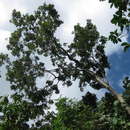en
names in breadcrumbs


Sapindus is a genus of about five to twelve species of shrubs and small trees in the lychee family, Sapindaceae, native to warm temperate to tropical regions of the world. The genus includes both deciduous and evergreen species. Members of the genus are commonly known as soapberries[3] or soapnuts because the fruit pulp is used to make soap. The generic name is derived from the Latin words sapo, meaning "soap", and indicus, meaning "of India".[4]
The leaves are alternate, 15–40 cm (5.9–15.7 in) long, pinnate (except in S. oahuensis, which has simple leaves), with 14-30 leaflets, the terminal leaflet often absent. The flowers form in large panicles, each flower small, creamy white. The fruit is a small leathery-skinned drupe 1–2 cm (0.39–0.79 in) in diameter, yellow ripening blackish, containing one to three seeds.

The drupes (soapnuts) contain saponins, which have surfactant properties, having been used for washing by ancient Asian and American peoples.[5][6] A number of other uses for Sapindus have also been reported such making arrows from the wood and decorative objects from the seeds.[7]
Leaf and fruit extracts of Sapindus have historically been used in folk remedies to treat various conditions.[8]
Sapindus species are used as food plants by the larvae of some Lepidoptera (moths and butterflies) species including Endoclita malabaricus. Kernel extracts of soapnut disrupt the activity of enzymes of larvae and pupae and inhibits the growth of the mosquito Aedes aegypti, an important vector of viral diseases.[9]
Soapnut is used as a dyeing agent for coloring the yarn of Tussar silk and cotton.[10]
The number of species is disputed between different authors, particularly in North America where between one and three species are accepted.
Sapindus is a genus of about five to twelve species of shrubs and small trees in the lychee family, Sapindaceae, native to warm temperate to tropical regions of the world. The genus includes both deciduous and evergreen species. Members of the genus are commonly known as soapberries or soapnuts because the fruit pulp is used to make soap. The generic name is derived from the Latin words sapo, meaning "soap", and indicus, meaning "of India".
The leaves are alternate, 15–40 cm (5.9–15.7 in) long, pinnate (except in S. oahuensis, which has simple leaves), with 14-30 leaflets, the terminal leaflet often absent. The flowers form in large panicles, each flower small, creamy white. The fruit is a small leathery-skinned drupe 1–2 cm (0.39–0.79 in) in diameter, yellow ripening blackish, containing one to three seeds.